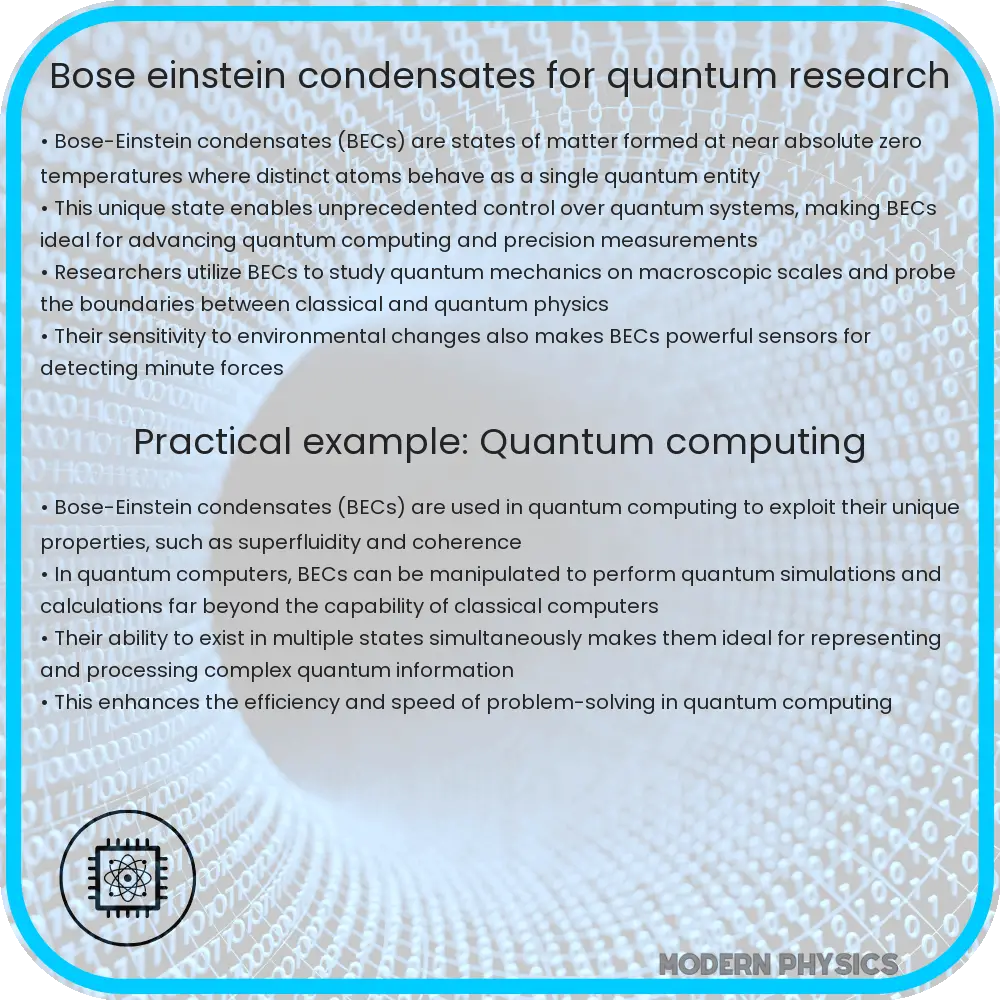In the fascinating realm of quantum mechanics, phenomena that defy our classical intuitions abound. Among these is the enigmatic phenomenon of Bose-Einstein condensates (BECs), where a group of atoms is cooled to near absolute zero, resulting in a state where they exhibit collective quantum behaviors. But what if we dared to explore the consequences when these condensates begin to spin, creating quantum whirlpools? This playful inquiry not only illuminates the profound intricacies of quantum states but also introduces a formidable challenge: what implications do these swirling quantum entities hold for our understanding of fundamental physics?
The investigation into rotating Bose-Einstein condensates reveals a tapestry of behavior that challenges our comprehension across multiple disciplines. When BECs are manipulated into a state of rotation, they exhibit a unique form of vortical motion. These vortices, akin to their classical fluid counterparts, manifest as quantized whirlpools within the condensate. Unlike classical fluids, where vortices can take various forms, quantum vortices are remarkable for their discrete nature, characterized by quantized circulation – a behavior that echoes the quantization found in other aspects of quantum mechanics.
At temperatures just a fraction above absolute zero, the macroscopic wavefunction of a BEC allows for the emergence of coherent excitations and the intertwining of matter waves. This interesting interplay results in specific energy levels that correspond to the angular momentum of the rotating system. When a BEC is spun up, it transitions into a state where these quantized vortices populate the fluid, leading to a counterintuitive manifestation of angular momentum. Consequently, one might wonder: how do the properties of these vortices influence the thermodynamic behaviors of the condensate itself?
The genesis of quantum vortices in BECs can be traced back to the pioneering works of scientists who conceptualized atomic behavior under conditions of extreme low temperature. When a BEC is created, the atoms occupy the lowest energy state – an occurrence referred to as macroscopic occupation of the ground state. However, by imparting angular momentum, experimentalists can induce the formation of vortices, spiraling outward in a dance that seems to defy our classical notions of fluid dynamics.
Delving further into this phenomenon, it becomes apparent that the interaction between the vortices and the collective excitations within the condensate leads to a rich array of dynamical behaviors. For instance, the interaction can give rise to the formation of vortex lattices, an ordered structure that emerges when numerous vortices congregate in a coherent arrangement. This intricate organization showcases the profound implications for superfluidity, where the flow of the condensed matter proceeds without viscosity due to the interstitial relationships formed between the vortices.
The study of rotating Bose-Einstein condensates also raises questions pertinent to the broader cosmos. Consider the parallels drawn between these quantum whirlpools and various astrophysical phenomena, such as the behavior of superfluid helium in astrophysical settings or the dynamics of neutron stars. In stellar contexts, the interactions and arrangements of particles in extreme environments may harbor similarities to those observed in BECs, potentially offering insights into the evolution of matter under cosmic conditions.
Moreover, the challenge of manipulating and sustaining the quantum whirlpools introduces avenues for experimental innovation. How can researchers maintain stable BECs while exploring the effects of rotation? What techniques could be employed to observe the fleeting states of such vortices before they dissipate? Addressing these challenges could yield significant advances in quantum technology, from quantum computing to precision measurement systems.
To further complicate the matter, the topology of quantum vortices in BECs has profound consequences on the nature of their interactions. Vortices possess a core region of suppressed density surrounded by a circulating superfluid flow, leading to a unique topology that plays a pivotal role in determining the stability and dynamics of the system. The stability of these vortices in relation to external perturbations poses an ongoing challenge. How might external electromagnetic fields or pressure gradients induce changes in the vortex configuration?
In addressing the playful question posed initially, the exploration surrounding the phenomena of quantum whirlpools forms an integral part of a larger narrative in quantum physics. As researchers diligently unravel the complexities of rotating condensates, they not only bring forth crucial insights into quantum mechanics but also confront philosophical inquiries into the very fabric of reality itself. What does the behavior of quantum whirlpools suggest about the nature of time, space, and the very concept of phase transitions in quantum systems?
The journey through the swirling dynamics of Bose-Einstein condensates beckons a profound understanding of both quantum mechanics and thermodynamics. The interplay between coherent matter waves and the emergence of quantized vortices offers a compelling analogy for the complex interrelations that define our universe. As the field advances, with researchers striving to unlock the mysteries surrounding quantum whirlpools, one can only wonder how these enigmatic entities will continue to shape our scientific landscape, paving the way for a new era of quantum innovation.
The swirling, intricate dance of vortex dynamics in Bose-Einstein condensates not only captivates the imagination but also propels humanity toward the threshold of newfound revelations. In this manner, one might ask: what extraordinary depths of understanding lie hidden just beyond the veils of these elegant quantum whirlpools?








